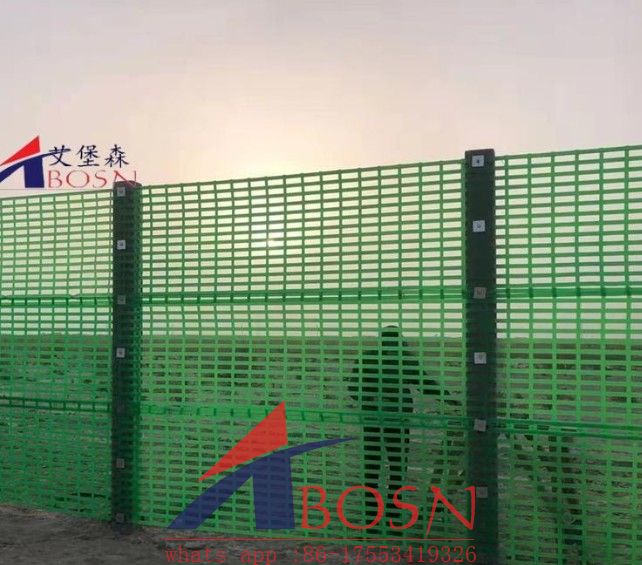HDPE Sand Barriers---An Effective Solution for Wind Erosion and Sand Control

Wind erosion and sand movement pose significant challenges in arid and semi-arid regions, threatening infrastructure, agriculture, and ecosystems. High-Density Polyethylene
(HDPE) sand barriers have emerged as a reliable and durable solution for mitigating these issues. These passive sand control devices are engineered to stabilize sand dunes, reduce wind erosion, and prevent desertification through intelligent design and high-performance materials.
HDPE sand barriers function by altering wind flow dynamics near the ground surface. As wind passes through the permeable structure of the barrier, its speed is reduced and its direction is modified, minimizing the wind's ability to lift and transport sand particles. This reduction in wind energy helps to trap airborne sand and promote sediment deposition on the leeward side, effectively stabilizing the dune or sandy area.
In addition to modifying airflow, the physical presence of the barrier acts as a protective shield, blocking the direct impact of wind-blown sand. Some designs incorporate multiple panels arranged at specific intervals and angles to further disrupt wind patterns, creating vortices that reduce shear stress on the sand surface and enhance sand-trapping efficiency.
Constructed from high-density polyethylene (HDPE), these sand control barriers offer exceptional durability and resistance to harsh environmental conditions. Key material benefits include:
· High impact and abrasion resistance
· Excellent UV stability and anti-aging properties
· Corrosion resistance
· Long service life in extreme desert climates
This makes HDPE an ideal material for long-term outdoor applications where exposure to sunlight, wind, sand, and temperature fluctuations is constant.
HDPE sand barriers are available in standard dimensions suitable for a wide range of applications:
· Length: Typically 3 meters
· Height: Commonly 1.2 meters or 1.5 meters
· Thickness: Ranges from 1 to 3 mm
In addition to standard sizes, custom configurations are available to meet specific project requirements, including different heights, mesh densities, and structural designs.
HDPE sand barriers are typically manufactured in green or black, colors chosen for both functionality and environmental integration. Green provides a visually harmonious appearance in certain landscapes and offers mild warning visibility, while black enhances heat absorption and contrast in sandy environments. Both colors are designed to be eye-friendly and provide a protective visual cue in remote or hazardous areas.
HDPE sand barriers are widely used across various sectors:
Transportation Infrastructure: Installed along railways and highways, they prevent wind-blown sand from accumulating on tracks and roadways, protecting roadbeds and ensuring safe, uninterrupted transportation.
Water Conservancy Projects: Used on riverbanks and dams, the barriers help control soil erosion and mitigate flood risks by stabilizing surrounding sandy soils.
Agriculture: Surrounding farmland, HDPE sand barriers shield crops from damaging wind and sandstorms, improving agricultural productivity and crop quality.
Industrial Sites: Commonly deployed in coal mines, coking plants, and power stations, they prevent coal dust and sand from being dispersed by wind, contributing to environmental protection and workplace safety.
HDPE sand barriers represent a proven, cost-effective, and environmentally resilient solution for combating wind erosion and sand encroachment. With their robust construction, adaptable design, and wide-ranging applications, they play a critical role in land stabilization, infrastructure protection, and desertification control—making them an essential tool in sustainable land management and environmental conservation efforts.
Email joanna@dzabosn.com whats app 86-17553419326